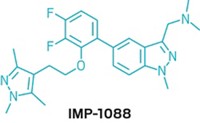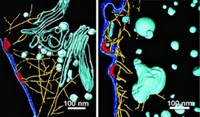Advertisement
Grab your lab coat. Let's get started
Welcome!
Welcome!
Create an account below to get 6 C&EN articles per month, receive newsletters and more - all free.
It seems this is your first time logging in online. Please enter the following information to continue.
As an ACS member you automatically get access to this site. All we need is few more details to create your reading experience.
Not you? Sign in with a different account.
Not you? Sign in with a different account.
ERROR 1
ERROR 1
ERROR 2
ERROR 2
ERROR 2
ERROR 2
ERROR 2
Password and Confirm password must match.
If you have an ACS member number, please enter it here so we can link this account to your membership. (optional)
ERROR 2
ACS values your privacy. By submitting your information, you are gaining access to C&EN and subscribing to our weekly newsletter. We use the information you provide to make your reading experience better, and we will never sell your data to third party members.
Biological Chemistry
Shipping Malaria's Weapons
Parasite uses biomachinery to get hostile proteins into human red blood cells
by Sarah Everts
June 22, 2009
| A version of this story appeared in
Volume 87, Issue 25

Malaria parasites living in human red blood cells hide in compartments called vacuoles, leaving researchers to wonder how the pathogen injects virulent proteins into the cell's cytosol. Now, a team based in Australia reports the discovery of a malaria protein machine that establishes itself in the vacuole membrane to do the hostile trafficking.
The discovery establishes a new target for malaria drug developers, says Tania de Koning-Ward, a molecular biologist at Deakin University, in Melbourne, and lead author of the Nature paper that reports the results (2009, 459, 945). "This machinery provides a portal through which hundreds of malaria proteins pass," she says, many of which are responsible for remodeling the cells to suit the protozoan's pathogenic prerogative.
De Koning-Ward and a team that includes Brendan S. Crabb of the Burnet Institute, also in Melbourne, identified five proteins that the malaria parasite, Plasmodium falciparum, sends to the vacuole membrane, where they then assemble into the transport complex called PTEX.
Once established, PTEX can export malaria proteins into the red blood cell's cytosol. Some of these exported proteins likely form adhesive knobs on the exterior of infected red blood cells, which make the cells stick to capillary blood vessels. The adhesion prevents the spleen from clearing diseased cells and can also lead to lethal blockage of blood vessels.
One of the proteins involved in the PTEX machinery likely uses ATP as fuel to do the trafficking, the Australian team shows. A second PTEX protein is intimately associated with the vacuole membrane and likely acts as a membrane pore, the authors note. A third member of PTEX recognizes proteins destined for transport.
The Australian team "shows convincingly" that the machinery they identified interacts with cargo proteins, note Sarah B. Reiff and Boris Striepen from the Center for Tropical & Emerging Global Diseases, in Athens, Ga. Although the work is "elegant," many additional steps, such as crystallization of PTEX, need to be achieved before a malaria therapy that blocks the machinery can be developed, says Thomas Templeton, a malaria researcher at Cornell University. "I believe this to be a ways off."




Join the conversation
Contact the reporter
Submit a Letter to the Editor for publication
Engage with us on Twitter